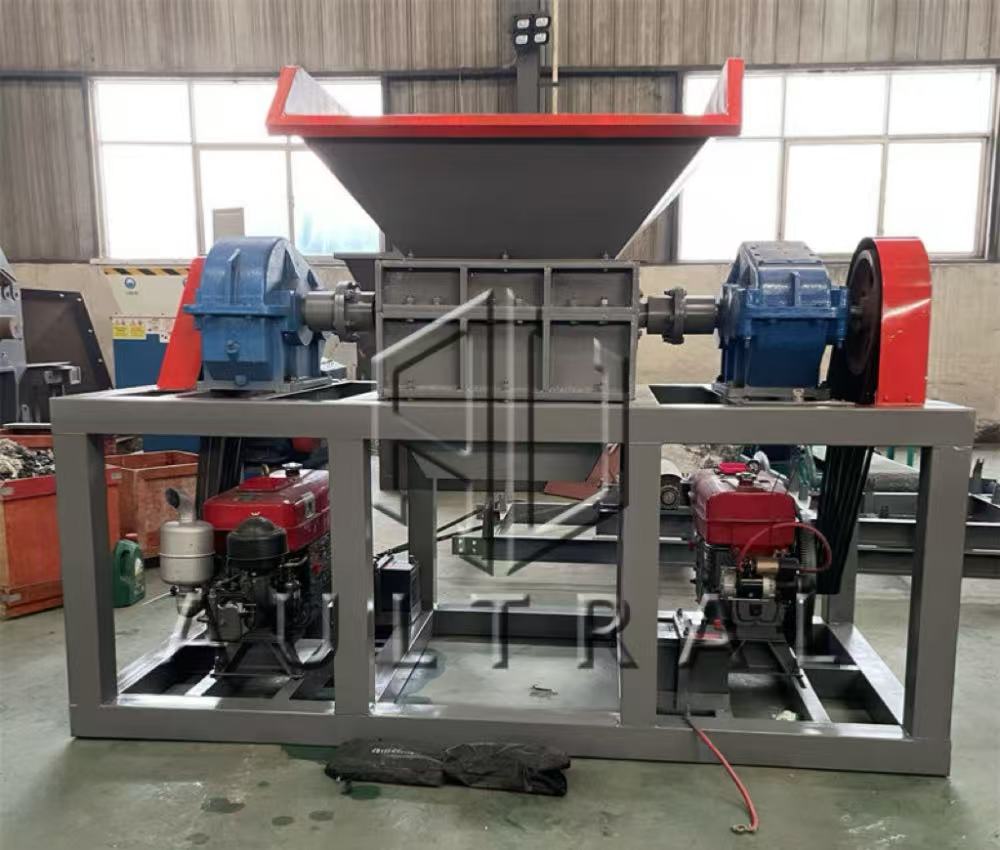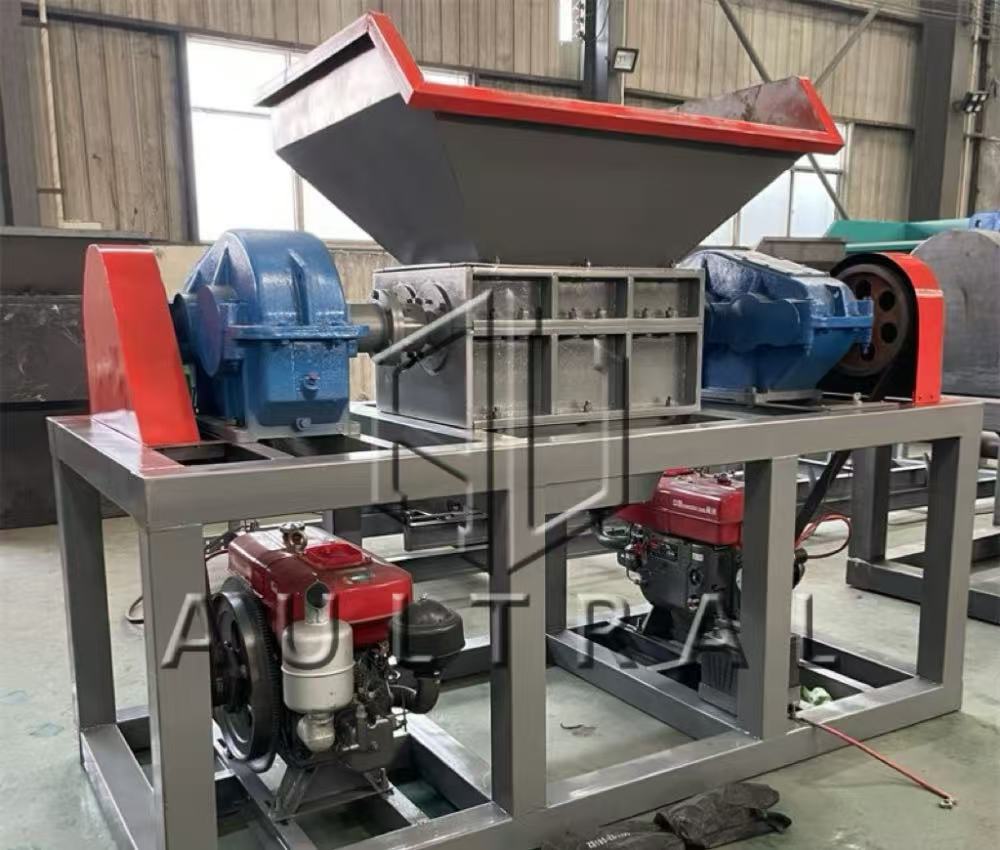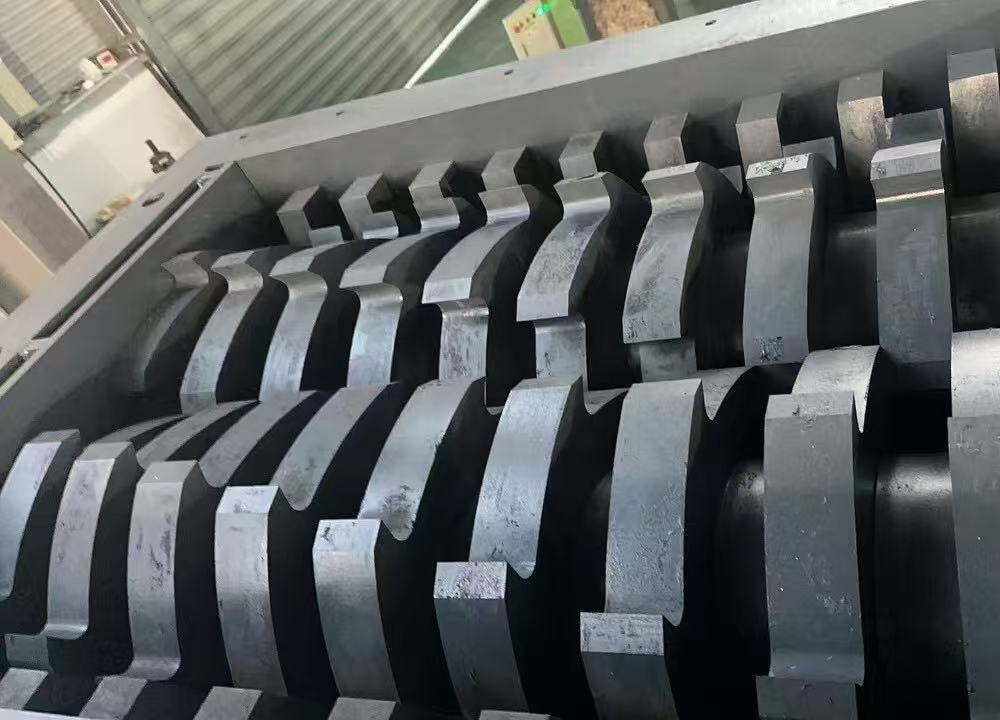What Is A Metal Shredder Machine?

A metal shredder machine is heavy-duty industrial equipment designed to break down and reduce the size of scrap metal. It works by using sharp, high-strength blades to cut, tear, and compress materials into smaller pieces. These machines can process a wide range of metals such as steel, aluminum, copper, and iron, as well as appliances, vehicles, and structural waste.
Metal shredders are essential for recycling industries because they simplify the handling, transport, and storage of bulky scrap. The shredded output can be easily melted, refined, or reused in new production processes.
Why Is A Metal Shredder Important?

Efficient Recycling
Metal shredders allow scrap yards and recycling companies to process large volumes of waste efficiently. Instead of manually cutting or transporting heavy materials, the shredder quickly reduces the size of scrap.
Environmental Protection
By enabling recycling, metal shredders reduce the need for mining and raw material extraction. This lowers carbon emissions, energy consumption, and environmental damage.
Cost Savings
Shredded metal is easier to transport and requires less storage space. This reduces logistics costs and increases the value of recycled materials.
High Market Demand
The global demand for recycled metal continues to rise. Industries like automotive, construction, and manufacturing rely heavily on recycled steel, aluminum, and copper. A metal shredder helps meet this growing demand.
How Does A Metal Shredder Work?

The working principle of a metal shredder involves several stages:
-
Feeding – Scrap metal is loaded into the machine using conveyors, cranes, or manual feeding systems.
-
Cutting And Tearing – Rotating blades or hammers cut, shear, and tear the metal into smaller pieces.
-
Compression – Some models compress the output, ensuring uniform particle size.
-
Separation – Advanced shredders can include magnetic separators to extract ferrous metals from non-ferrous ones.
-
Discharge – The shredded metal exits through conveyors, ready for further processing or direct use.
Types Of Metal Shredder Machines
Single Shaft Shredder
-
Uses one rotating shaft with powerful blades.
-
Suitable for light to medium scrap such as aluminum sheets, copper wires, and steel drums.
Double Shaft Shredder
-
Equipped with two counter-rotating shafts.
-
Can handle heavy-duty materials like car bodies, pipes, and mixed scrap.
-
Delivers high torque and uniform shredding.
Hammer Mill Shredder
-
Utilizes heavy hammers that crush and pulverize the metal.
-
Effective for cars, appliances, and bulky waste.
-
Produces finer metal particles suitable for smelting.
Four Shaft Shredder
-
Contains four shafts working together.
-
Provides controlled output size with a uniform finish.
-
Commonly used in applications requiring precise shredding results.
Key Features Of A Good Metal Shredder
-
Durable Blades – Made from wear-resistant alloy steel for long service life.
-
Powerful Motor – High-torque motors ensure consistent shredding performance.
-
Robust Frame – Heavy-duty structure resists vibration and shock.
-
Safety Systems – Emergency stop buttons, overload protection, and covers.
-
Automation Options – Some machines offer PLC control for automatic operation.
How To Use A Metal Shredder Safely
-
Pre-Check The Machine – Ensure blades, motors, and belts are in good condition.
-
Sort The Scrap – Remove hazardous materials like gas cylinders or batteries.
-
Feed Properly – Use conveyors or cranes to load evenly. Avoid overloading.
-
Monitor Operation – Check for unusual noise, vibration, or overheating.
-
Regular Maintenance – Replace worn blades and lubricate moving parts.
How To Choose The Right Metal Shredder Machine
1. Identify The Type Of Scrap
-
Light scrap: Use a single shaft shredder.
-
Heavy scrap: Consider a double shaft or hammer mill shredder.
-
Mixed scrap: Four shaft shredders provide precision.
2. Check Capacity Requirements
-
Small-scale operations may need 1–3 tons per hour.
-
Medium-sized facilities often require 5–10 tons per hour.
-
Large recycling plants handle 20 tons per hour or more.
3. Consider Output Size
If the shredded metal will go directly into smelting, finer particles are needed. For transportation or resale, larger fragments may be acceptable.
4. Look For Energy Efficiency
Modern shredders come with energy-saving motors and smart control systems. This reduces electricity costs and operational expenses.
5. Budget And Return On Investment
The cost of a metal shredder depends on size, capacity, and technology. Consider long-term benefits such as reduced labor costs, higher scrap value, and increased productivity.
Advantages Of Using A Metal Shredder
-
Boosts Recycling Profitability – Higher-quality shredded output has greater resale value.
-
Saves Time And Labor – Automated systems reduce manual work.
-
Improves Safety – Eliminates the need for dangerous manual cutting.
-
Supports Sustainability – Contributes to a greener, circular economy.
Applications Of Metal Shredder Machines
-
Automotive Recycling – Shredding car bodies, engines, and spare parts.
-
Appliance Disposal – Processing refrigerators, washing machines, and stoves.
-
Construction Waste – Recycling beams, pipes, and structural steel.
-
Electronics Recycling – Breaking down computers, cables, and electrical equipment.
-
Foundries And Steel Mills – Preparing raw materials for melting and refining.
Maintenance Tips For Long Service Life
-
Clean the machine after each use.
-
Replace worn blades promptly.
-
Grease bearings and shafts regularly.
-
Inspect motors and electrical systems.
-
Schedule professional servicing at least twice a year.
Future Trends In Metal Shredding
The future of metal shredders lies in automation, energy efficiency, and smart technology. Upcoming models will feature AI-driven monitoring, predictive maintenance, and advanced material separation. This will make recycling faster, safer, and more profitable.
Common Mistakes To Avoid When Buying A Metal Shredder
Many buyers make quick decisions when purchasing a shredder, which can lead to costly mistakes. Here are some common pitfalls:
-
Ignoring Scrap Variety – Buying a small shredder for heavy scrap like car bodies will cause frequent breakdowns. Always match machine type with your material.
-
Underestimating Capacity – Choosing a low-capacity shredder can slow production and reduce profits. Plan for both current and future needs.
-
Overlooking Maintenance Costs – Some machines may seem cheaper but require frequent repairs. A reliable brand with durable parts is more cost-effective in the long run.
-
Not Considering Space – Large shredders need enough floor space, strong foundations, and proper ventilation.
-
Skipping After-Sales Support – Always ensure the supplier provides installation, training, spare parts, and technical support.
Frequently Asked Questions (FAQ)
1. Can A Metal Shredder Handle Non-Metal Waste?
Yes, some shredders can process plastics, wood, and rubber. However, specialized designs are recommended for maximum efficiency.
2. How Long Do Shredder Blades Last?
With proper maintenance, high-quality alloy blades can last from 6 months to over a year, depending on usage intensity.
3. Is A Metal Shredder Noisy?
Yes, shredding generates noise, but modern models come with noise-reduction covers and vibration control systems.
4. What Power Supply Is Required?
Most industrial shredders require a three-phase power supply. The exact voltage depends on machine size and motor capacity.
5. Can A Shredder Increase Scrap Value?
Absolutely. Shredded and sorted metal is easier to resell and usually fetches higher market prices than unprocessed scrap.
Conclusion
A metal shredder machine is more than just equipment – it is the heart of modern recycling. From handling bulky scrap to producing valuable raw materials, it plays a crucial role in environmental protection, cost reduction, and industrial growth.
Choosing the right shredder requires careful consideration of scrap type, capacity, output size, and budget. With proper usage and maintenance, a metal shredder can serve as a long-term investment that drives profitability and sustainability.
